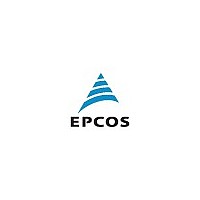B88069X7990B502 EPCOS Inc, B88069X7990B502 Datasheet - Page 25

B88069X7990B502
Manufacturer Part Number
B88069X7990B502
Description
Gas Discharge Tubes (GDTs) / Gas Plasma Arrestors T83-A300X
Manufacturer
EPCOS Inc
Datasheet
1.EZ0-A75XSMD.pdf
(71 pages)
Specifications of B88069X7990B502
Lead Free Status / RoHS Status
Lead free / RoHS Compliant
Definitions, Measuring Conditions
Definitionen, Messbedingungen
Maximum follow current
For the type series EF* (data sheet see page 39) we spec-
ify this performance feature as the maximum permissible
peak current which may flow from the supply current
source through the arrester in the interval between the
decay of the surge and the following zero crossing of the
AC voltage. This discharge may be repeated ten times
with an interval of 30 s.
For notes about power line applications refer to page 26.
Service life
Up to 300 discharges of rated discharge current
10/1000 µs.
Insulating resistance R
Ohmic resistance of the non-ignited arrester:
– EPCOS surge arresters
– Requirement of ITU-T
– Requirement of DIN VDE
As a rule, the arrester is tested with a test voltage of
100 V DC. This value is reduced to 50 V DC for types with
90 and 150 V DC.
1) Unless otherwise specified
Capacitance C
Self-capacitance of the arrester without holder:
EPCOS surge arresters
Requirement of ITU-T
Requirement of DIN VDE
Test configuration for 3-electrode arresters
The specified spark-over voltages, insulating resistance
and capacitance refer to the respective measurements
between one of the two wire electrodes (a/b) and the cen-
ter electrode (c).
Unless otherwise specified, the impulse or AC current
is applied simultaneously from the two line electrodes to
the center electrode with the defined value as the total
current through the center electrode (c).
Circuit symbol for
2- and 3-electrode
arresters:
a, b
c
© EPCOS AG 2008
Tip/ring (line)
electrode
Center electrode
ins
1)
a
Please read Important notes on page 4 and Cautions and warnings on page 69.
(depending on type)
0.5 pF … 3 pF
Bitte beachten Sie die Seite 4 Wichtige Hinweise sowie die
> 10
> 10
> 10
< 20 pF
< 5 pF
10
10
9
Ω
Ω
Ω
Ω
Ω
Ω
b
Warn- und Sicherheitshinweise auf Seite 69.
a
Maximaler Folgestrom
Für die Baureihe EF* (Datenblatt siehe Seite 39), spezifi-
zieren wir dieses Leistungsmerkmal als höchstzulässigen
Strom, der im Zeitbereich zwischen Abklingen der Über-
spannung und dem folgenden Nulldurchgang der Wech-
selspannung aus der Betriebsstromquelle durch den
Ableiter fließen darf. Eine Wiederholung dieser Belastung
ist 10 mal im Abstand von 30 s zulässig.
Hinweise zu Netzanwendungen siehe Seite 26.
Lebensdauer
Bis zu 300 Belastungen bei Stromwellenform
10/1000 µs.
Isolationswiderstand R
Ohmscher Widerstand des nicht gezündeten Ableiters:
– EPCOS-Überspannungsableiter
– Forderung nach ITU-T
– Forderung nach DIN VDE
Die Prüfung erfolgt in der Regel mit einer Messspannung
von 100 V DC. Für 90- und 150-V-Typen hingegen mit
50 V DC.
1) Falls nicht anders spezifiziert
Kapazität C
Eigenkapazität des Ableiters ohne Fassung:
– EPCOS-Überspannungsableiter
– Forderung nach ITU-T
– Forderung nach DIN VDE
Test- und Prüfanordnung für 3-Elektroden-Ableiter
Die Angaben zu den Ansprechspannungen, dem Isolati-
onswiderstand und der Kapazität beziehen sich jeweils
auf die Messung zwischen einer der beiden Ader-Elektro-
den (a/b) und der Mittel-Elektrode (c).
Wenn nicht anders angegeben, erfolgt die Belastung mit
Stoß- oder Wechselstrom simultan von den beiden Ader-
Elektroden zur Mittel-Elektrode mit dem spezifizierten
Wert als Summenstrom über die Mittel-Elektrode (c).
c
is
b
Schaltzeichen für
2- und 3-Elektroden-
Ableiter:
a, b
c
1)
Ader-Elektrode
Mittel-Elelektrode
(typenabhängig)
25
0,5 ... 3 pF
> 10
> 10
> 10
< 20 pF
< 5 pF
10
10
9
Ω
Ω
Ω
Ω
Ω
Ω

















